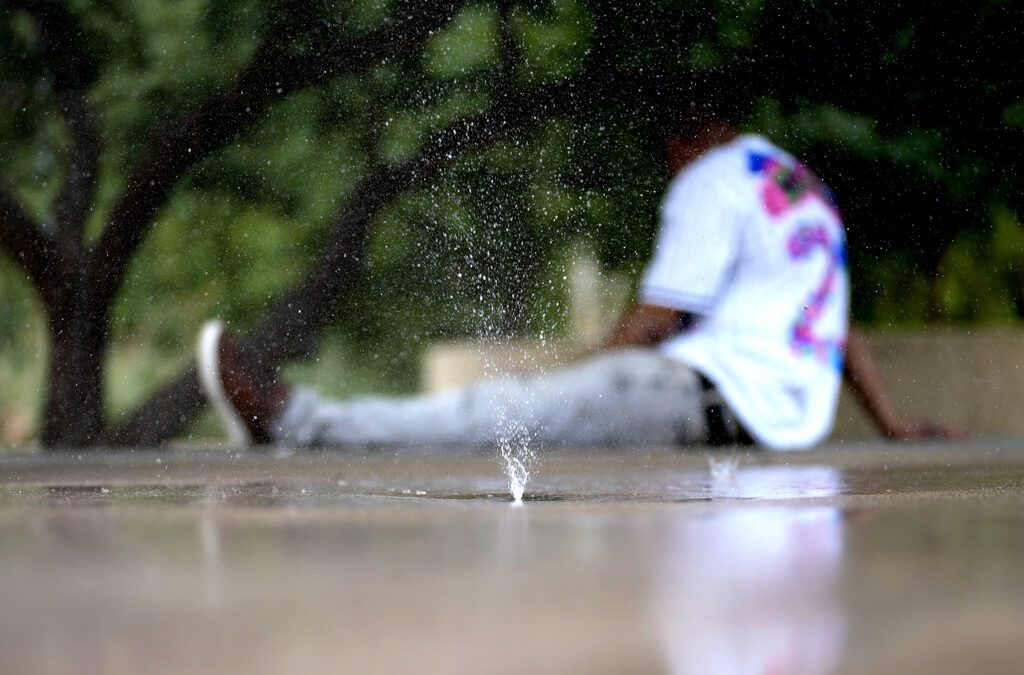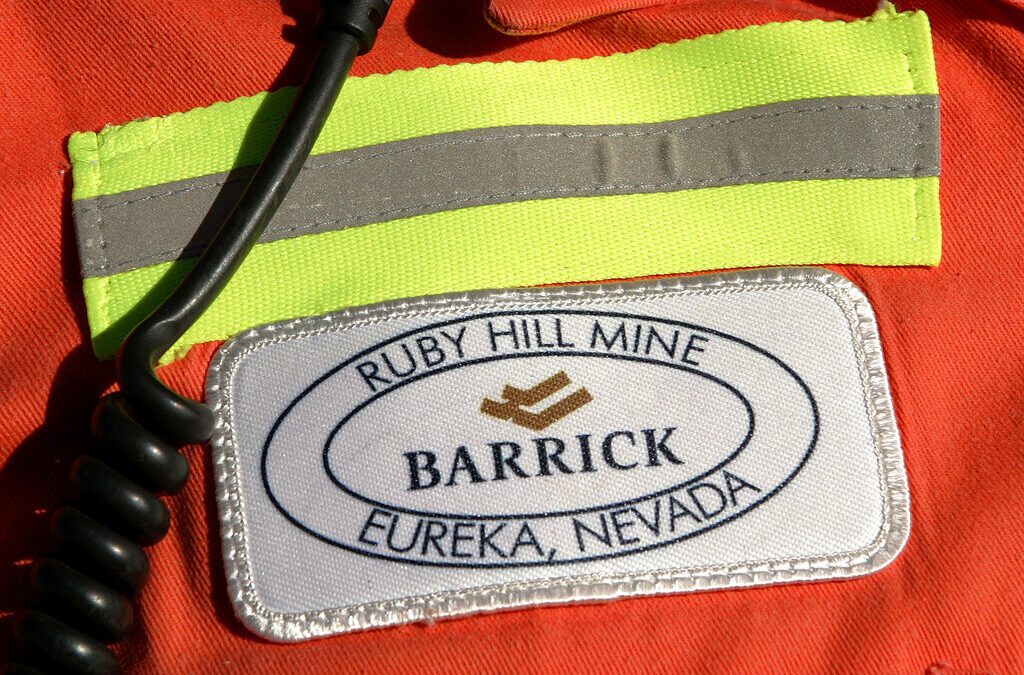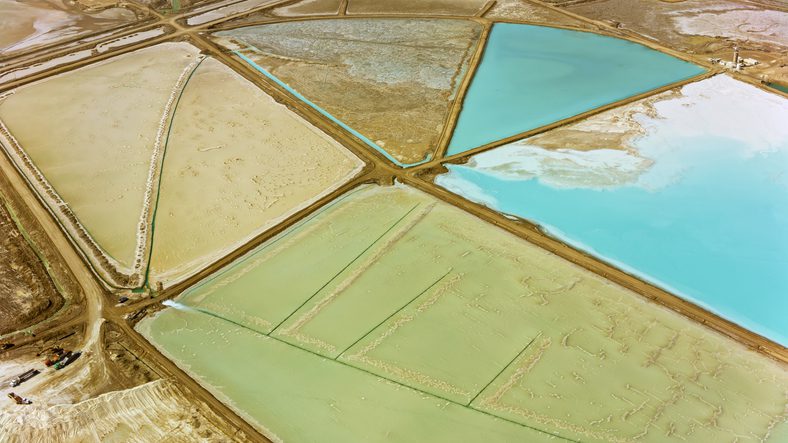
FILE - Workers remove a membrane panel from a tank at the Regional Recycled Water Advanced Purification Center in Carson, Calif., on June 2, 2022. (Photo courtesy of the Metropolitan Water District of Southern California)
Once completed, the Pure Water Southern California project will be able to produce up to 150 million gallons of purified water per day — enough to supply up to approximately 386,000 Southern California and Southern Nevada homes per year, according to lawmakers.
California water officials building a state-of-the-art water recycling facility to lessen the state’s dependence on drinking water from Nevada’s Lake Mead has been awarded more than $26 million in federal funding, according to Nevada Democratic US Sen. Catherine Cortez Masto’s office.
Once completed, the so-called Pure Water Southern California project will be able to produce up to 150 million gallons of purified water per day — enough to supply up to approximately 386,000 Southern California and Southern Nevada homes per year, Cortez Masto’s office said in a press release. The project is expected to be the largest water recycling facility in the US once completed and received $99 million in additional federal funding at the end of May.
Like the first round of funding, the $26 million announced Monday is sourced from the 2022 Infrastructure Investments and Jobs Act (IIJA) as part of a program from the Department of the Interior to mitigate drought in the West and improve sustainability of the Colorado River — which feeds Lake Mead and is the primary source of drinking water for some 40 million Americans across seven states.
“I created the large-scale water recycling program through the Bipartisan Infrastructure Law to support this cutting-edge initiative to strengthen our water supply and protect critical water resources like Lake Mead,” Cortez Masto said in a release. “I’m pleased to see these funds coming to help us combat drought throughout the West, and I’ll continue working to ensure Nevada families have access to essential water services for generations to come.”
Bill Hasencamp, Colorado River resources manager for Metropolitan Water, told The Nevadan in June that the plant will utilize a three-step process that will purify wastewater and inject it back into local aquifers to be used again. The treated water has to meet or exceed the state’s stringent drinking water standards before it is pumped upwards of 60 miles using a network of pipes and finally returned to local groundwater basins or industrial facilities around the Los Angeles area.
Bronson Mack, an outreach manager for the Southern Nevada Water Authority, told The Nevadan for that same story that the agency is giving approximately $750 million to help fund the Pure Water project, which is currently undergoing regulatory approvals. The project is tentatively scheduled to have facilities online by 2028 and be fully operational by 2032.
In exchange for Nevada’s financial contribution, Mack said, California will leave some of its allocated Colorado River water in Lake Mead for Nevada’s use, if needed, which will help extend the water supply and allow officials to maximize use of water resources.
Nevada and California are part of a group of seven Western US states that, along with Mexico, rely on the Colorado River for water. The Colorado River Basin itself is split into an upper region consisting of Wyoming, Colorado, Utah, and New Mexico, while Nevada, California, and Arizona are defined as lower basin states. The river flows into two reservoirs, Lake Powell and Lake Mead.
But a historic decades-long drought has caused water levels in Lakes Mead and Powell to plummet in recent years, triggering mandatory conservation measures that still may require further voluntary cuts if water levels continue to fall.
In December of 2023, the Biden administration also granted $295 million in infrastructure funds to the Golden State to conserve an additional 643,000 acre-feet of Lake Mead water through 2025. California, Nevada, and Arizona agreed last May to conserve a cumulative 3 million acre-feet through the end of 2026.
The federal government to date has leveraged nearly $13 billion from the IIJA and the 2022 Inflation Reduction Act to invest in water conservation and drought mitigation technologies across the west. It’s not yet clear if more cuts will be needed in the future, but federal and state governments are continuing to negotiate new agreements that would dictate how water from the Colorado River is allocated for 2026 and beyond.

Many fear help for Nevada water conservation will dry up under Trump
Despite billions from the Inflation Reduction Act going to benefit Nevada, President-elect Donald Trump and conservative fiscal hawks may pursue a...

Grant from Biden infrastructure law to help install 185 EV charges around Las Vegas valley
A $3.2 million grant from the US Department of Transportation will help fund and install electric vehicle charging stations in primarily...

Almost 500 people have died from extreme heat in Las Vegas in 2024, officials say
Factors relating to extreme heat accounted for 491 deaths and more than 3,500 emergency room visits, according to Clark County officials, as Las...

Nevada gold mining venture selected for $95M solar project
After being awarded a federal grant to help decarbonize the mining industry, Nevada Gold Mines hopes to build two on-site solar panel and battery...

Opinion: This Christmas, I want more renewable energy to help address hardworking Nevadans’ economic challenges
As a full-time college student balancing part-time work and rising living costs, utility expenses have become an unsustainable burden, especially...

Opinion: The Lithium Rush Is Repeating Past Mistakes. Will We Ever Learn?
Amid the excitement around the shift to clean energy, a critical issue remains overlooked: community engagement in resource extraction. As the...




